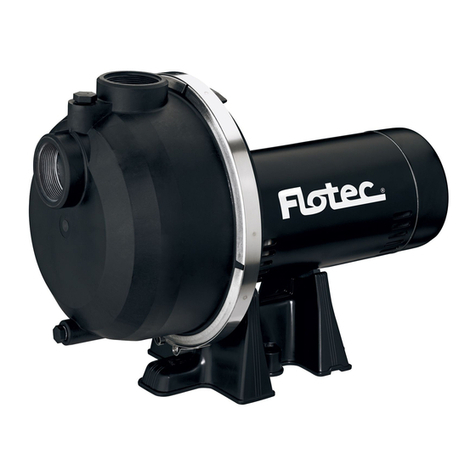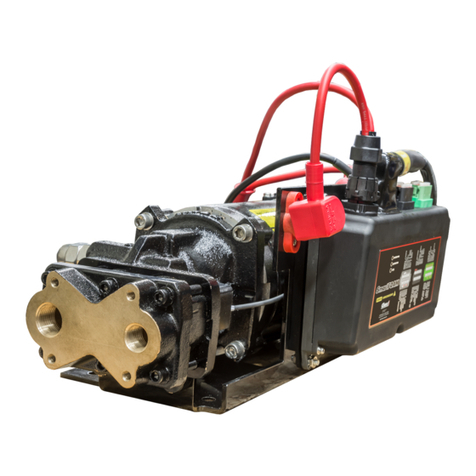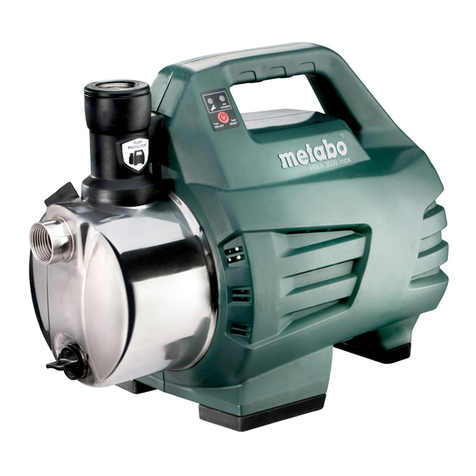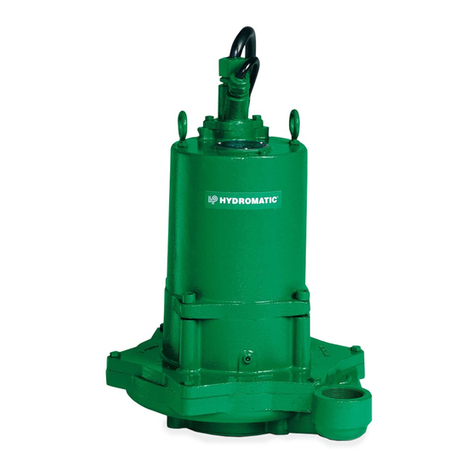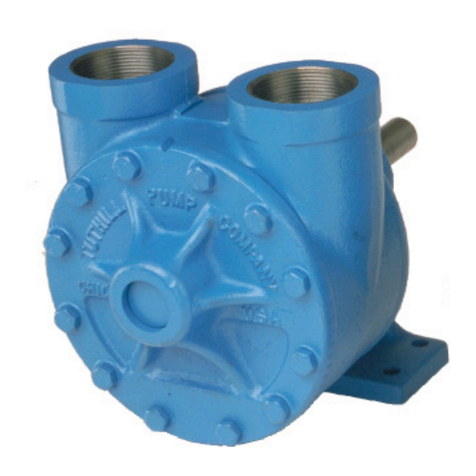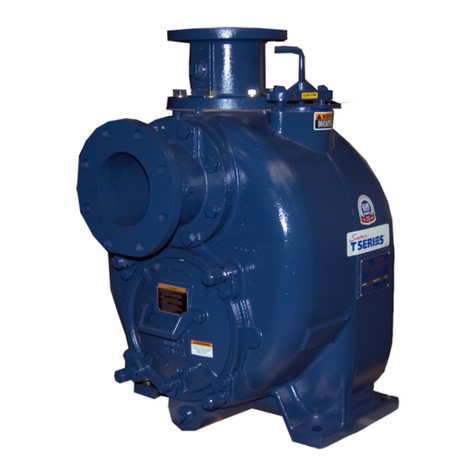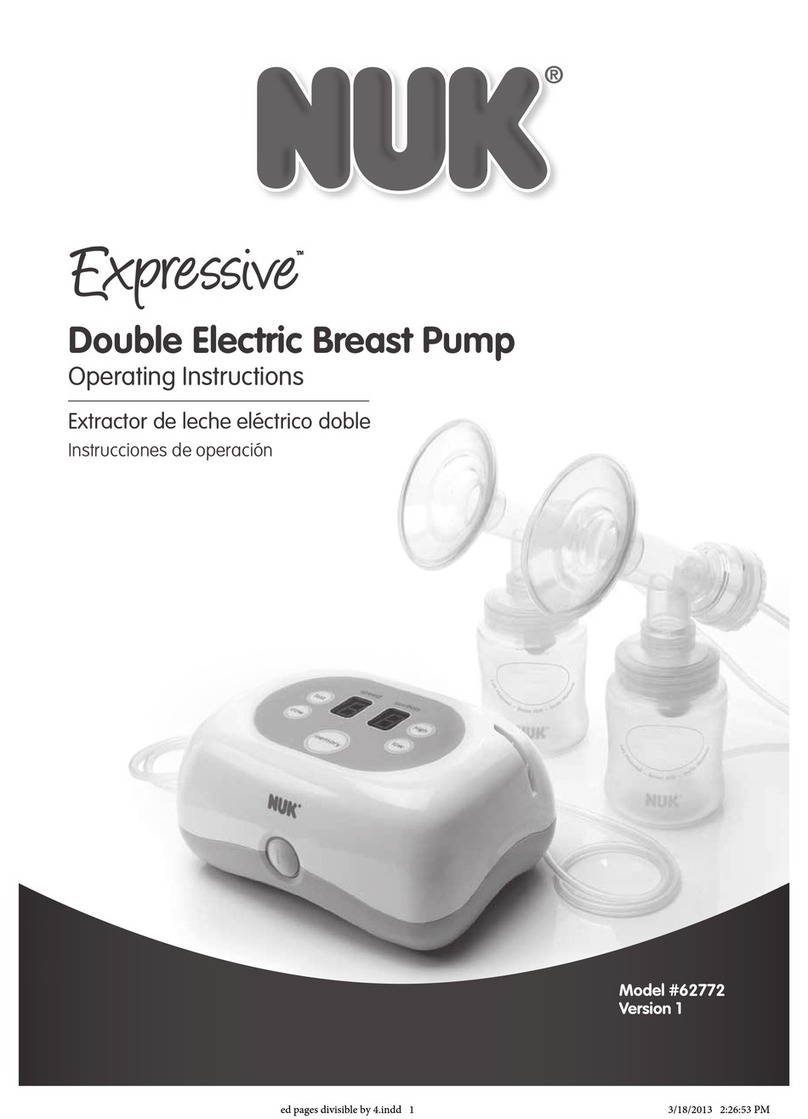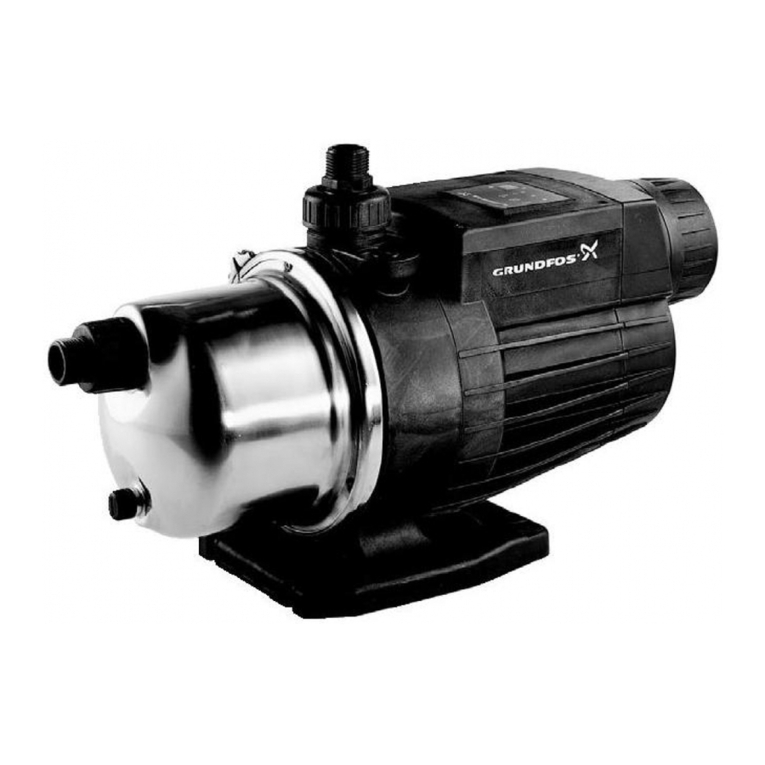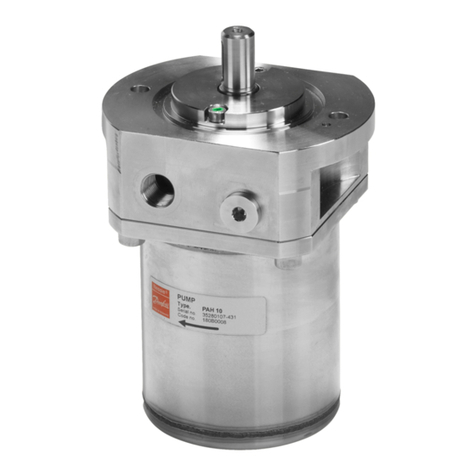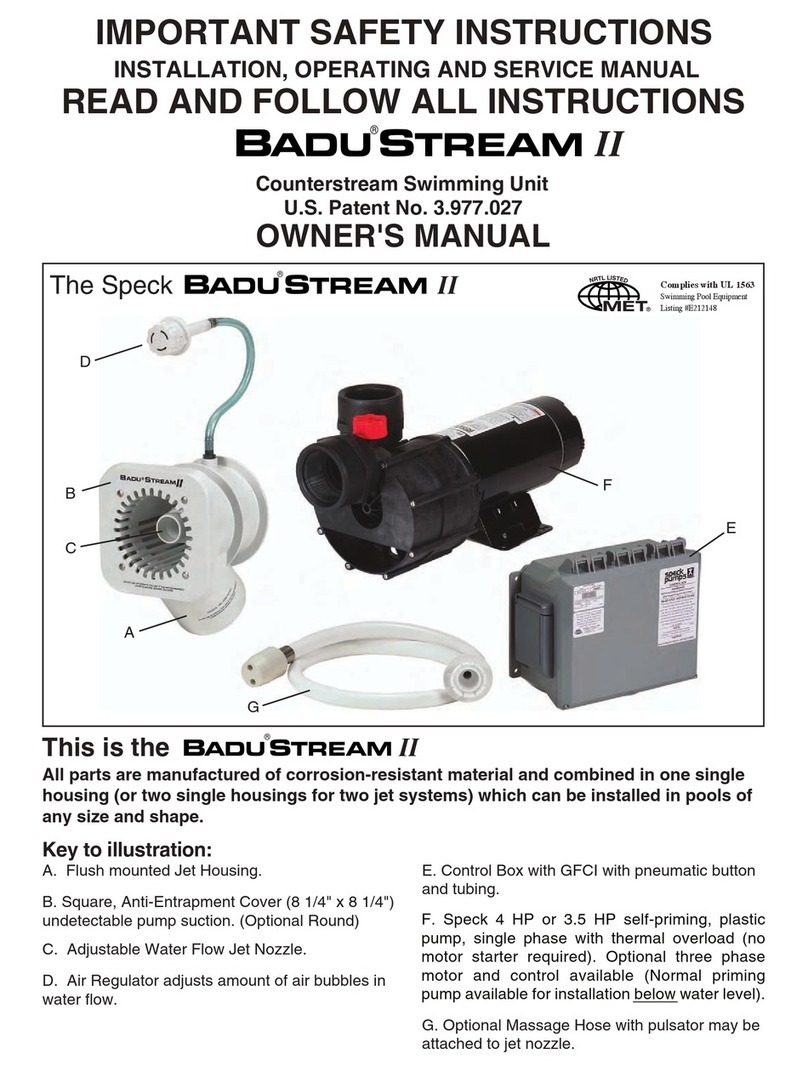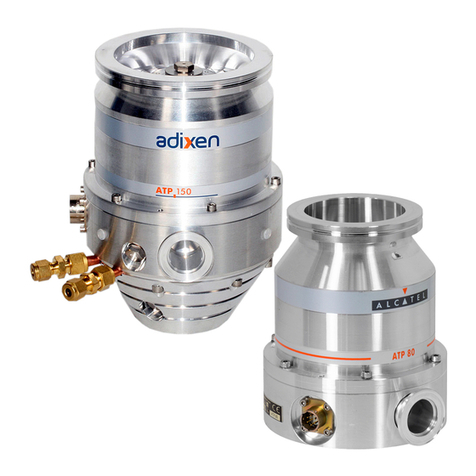
Shanghai EVP Vacuum Technology Co., Ltd. www.evpvacuum.com
6.2. Starting
①Start the fore pump
②Open the gas inlet valve of this pump
③Open the water cooling valve and start this
pump.
④The pump should be in a stable operation and
the rotor without crash . Or should be
stopped.
⑤There is no leakage in the oil –sealed position
of a pump’s shaft.
⑥During the operating, if the temperature rise is
too high, the reading of current meter is
suddenly changed, an abnormal noise or
other unusual phenomena appears, the pump
should be stopped immediately.
6.3. Stopping
①Close gas inlet valve which on inlet port at
first.
②Stop pump(and close the inlet valve )
③Stop the fore pump
④Close the water inlet valve of water cooling
pipe.
⑤If the pump’s operation is stopped for a long
time or its operating in a cold zone, the
cooling water must be drained out completely.
Otherwise, the cooling water will be frozen and
make the pump’s castings in frost crack.
7. Maintenance & accessories
7.1 Safety information
The safety information was given in the
following applies to all maintenance work.
Warning: Disconnect the electrical power before
disassembling the pump and venting to
atmospheric pressure. Make absolutely sure
that the pump cannot be accidentally started. If
the pump has been pumping harmful
substances, determine the nature of hazard and
introduce suitable safety measure.
When drying or blowing out the pump with
compressed air, technician must observe and
obey all safety regulations.
Caution: All maintenance and cleaning work
described in this section must be only carried
out by the trained person.
When handling the used oil please observe the
relevant environment regulations.
Improper maintenance or repairs may affect the
service life and pump performance.
7.2 Oil change/gear box
Warning: Before pumping oxygen or other highly
reactive gases at concentrations which
exceeding 20% in the atmosphere will be
necessary to choose a special pump. Such a
pump has to modified and degreased as well
as a special lubricant oil. Bearings consume a
little oil and the gear under clean operating
conditions. We recommend you to change the
oil after the first 500hrs operation to remove
any wearing residue. Then, under the normal
operating conditions, change pump oil after
every 3000hrs operating. Change oil much
more frequently when pumping corrosive
vapors or large amount of dust or when
sucking from the atmospheric pressure to
working pressure usually.
Warning: Before removing the oil-drain/oil filling
screw, the pump should be stooped at first
and vent to atmosphere pressure (have no
vacuum inside pump chamber). When the
pump has become warm during operation,
the casing and the oil temperature may
exceed 80℃,then should leave the pump to
cooling down. Always wear protective gloves
to protect yourself against aggressive
residues in the oil. Loosen the oil-drain/oil-fill
screw and then drain out the oil. Clean the
sealing surface and firmly re-install the
oil-drain screw using a gasket which is in a
perfect condition. Wipe off any oil residues
from the casing. Fill in new oil. Make sure to
use the right kind of oil.

















